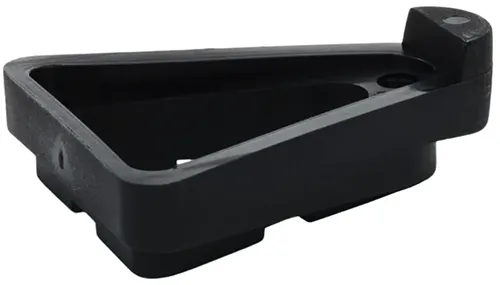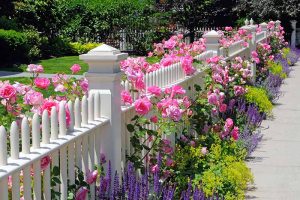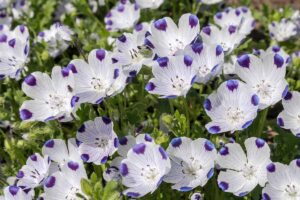Grape hyacinths (Muscari spp.) are one of spring’s flowering gems, bursting into color early in the year with delightful, fragrant flowers – and they’re ideal bulbs for container cultivation.
These petite blooms are magnificent for mass planting, creating saturated waves of color ranging from brilliant blue and mauve to purple or white, with flowers that resemble small clusters of grapes.
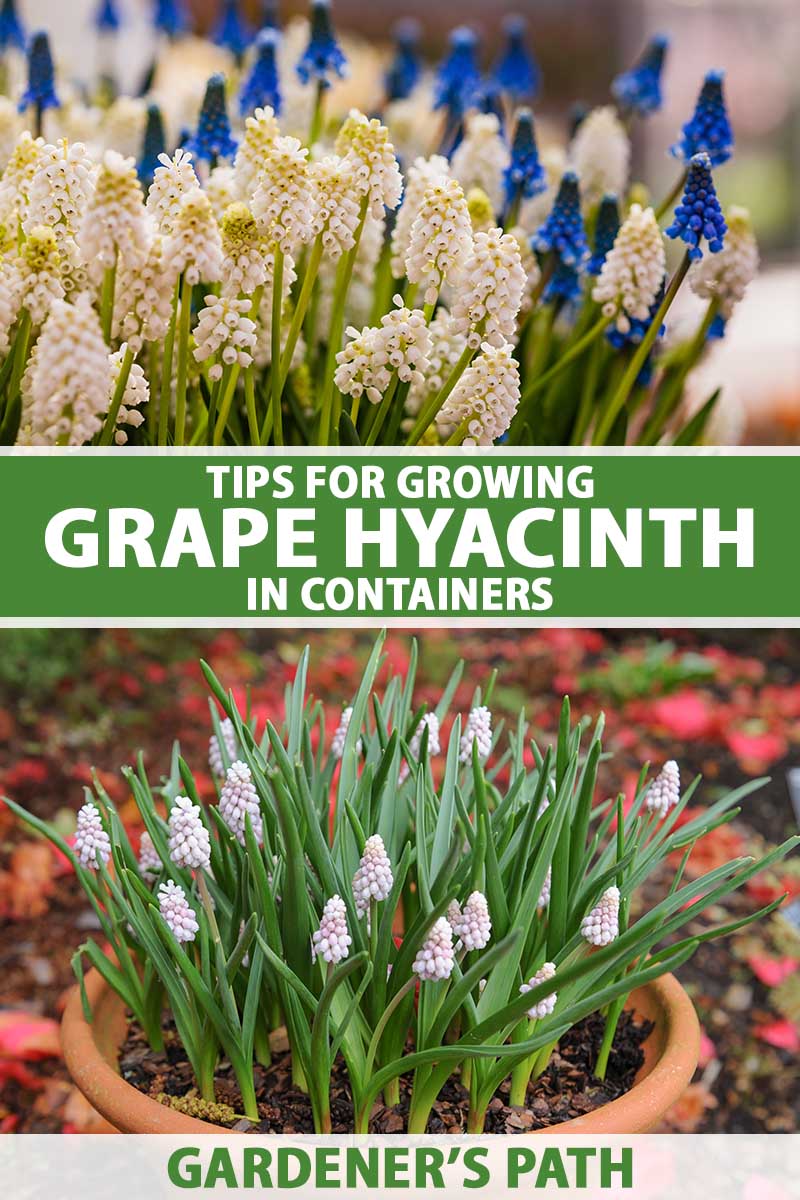
We link to vendors to help you find relevant products. If you buy from one of our links, we may earn a commission.
As perennial bulbs, they enjoy a cold spell of restful dormancy, then joyfully signal the end of winter as they sprout and bloom to brighten beds, borders, rockeries, and naturalized drifts.
In containers, they create gorgeous cushions of color on their own, and mix in beautifully with other spring bulbs like anemones, crocuses, and daffodils.
Their small size and short bloom period makes them an excellent choice in mixed planters along with perennial ground covers, pansies, ornamental grasses, small woody herbs such as rosemary, sage, or thyme, or dwarf flowering shrubs such as azalea or spirea as well.
Wonderfully low-maintenance, they’re a natural for planters, pots, or window boxes – so be sure to plant plenty where their color and light fragrance can be enjoyed, on decks and patios or flanking exterior doors.
Deer, rabbit, and rodent resistant, the flowers are also beneficial to early pollinators and make excellent cut flowers for bud vases!
Are you ready to add some sparkling blues, purples, or whites to your garden pots? Then let’s jump into this tutorial so you can learn how to grow grape hyacinths in containers.
Here’s an outline of what’s ahead:
What You’ll Learn
Muscari Basics
Numerous Muscari species make popular garden plants and most are hardy in USDA Zones 4 to 8, with some withstanding conditions throughout a broader range, such as M. botryoides which is hardy in Zones 3 to 9.
Our guide provides more information about growing grape hyacinth in the garden.
As perennial autumn-planted bulbs, they require a period of cold vernalization to flower, or eight to 10 weeks with temperatures ranging from 35 to 48°F.
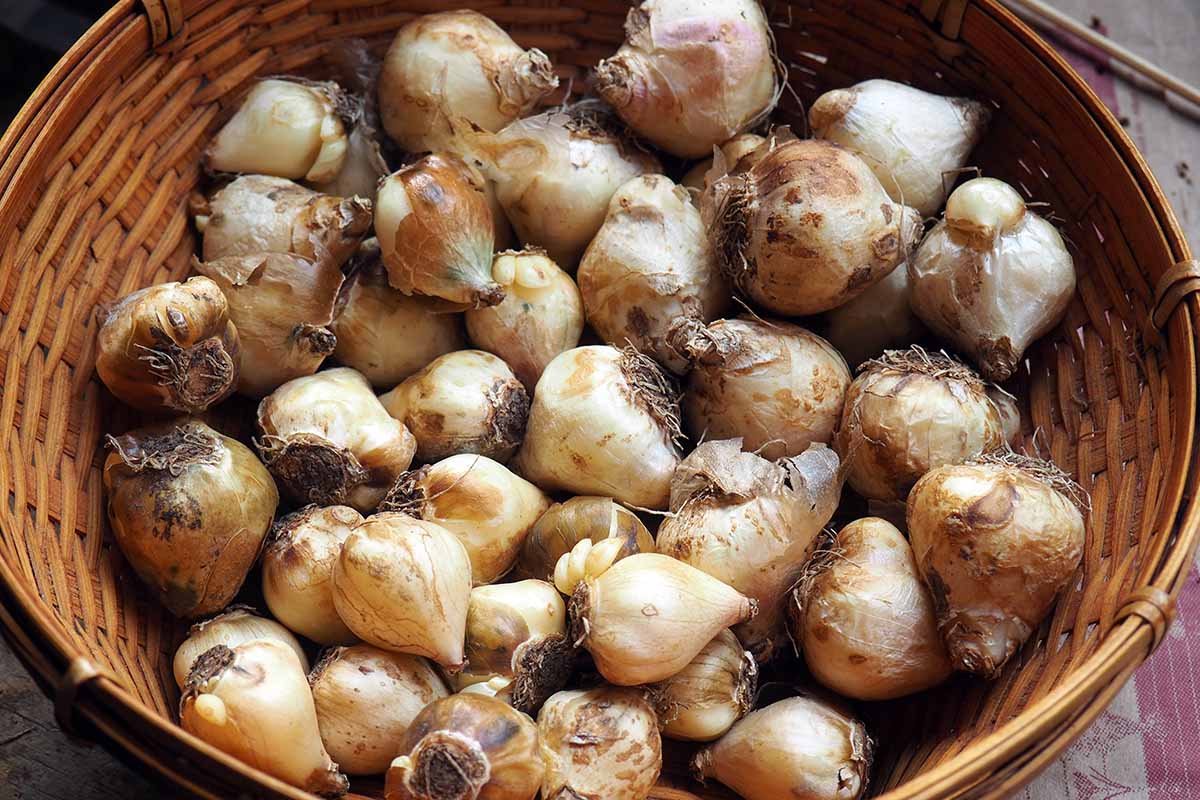
If your winter temperatures aren’t cool enough, purchase pre-chilled bulbs, or you can store bulbs in the refrigerator for the necessary period.
In summer, plants go dormant and the foliage turns yellow and dies back.
Grape hyacinths are also an excellent choice for forcing indoors for winter flowers. You can find the details in our guide, which also includes step-by-step instructions for chilling bulbs.
Containers and Drainage
Pots and planters can be any size or material you like, but they must allow for adequate drainage.
However, pots made of materials such as ceramic, plaster, or terra cotta can crack in freezing temperatures and should be moved into a sheltered spot such as an unheated garage or shed for winter protection as needed.
Like many bulbs, Muscari can’t abide wet soil and can develop problems like root and bulb rot in soggy conditions.
But they also like a lightly moist soil, so it’s essential their pots have drainage holes to keep water flowing away from the roots.
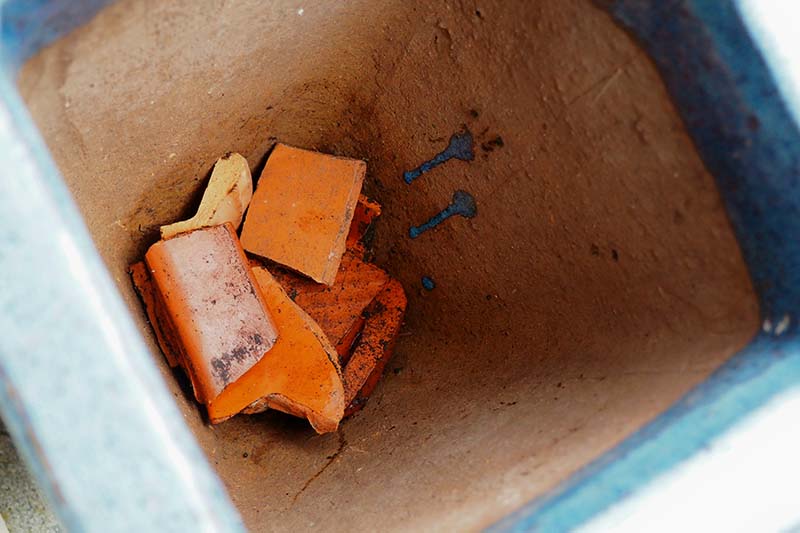
Adding a two-inch layer of drainage material – like broken pottery or pebbles – over the drainage holes is my preference, and it reduces the chance of them becoming plugged with soil.
A small screen or piece of mesh could also be added before filling pots.
Throughout the growing season, use a catchment saucer to keep things tidy, but be sure to dump it out after each time you water to discard the excess. Oversaturated soil and standing water can lead to root rot.
For pots that sit on concrete slabs, flagstone steps, and vinyl or wood decking, use elevating pot toes to keep surfaces dry and prevent staining.
I find them invaluable for keeping decks and steps in good condition. You can use three to support round pots of any size, and four to six for rectangular planters.
Find 12-packs of plastic pot toes available at Home Depot in black or gray, or choose a six-packs of terra cotta to match your containers.
Next up, your container needs to be filled with the right soil.
Soil Needs
Muscari likes a well-draining, gritty or sandy soil.
For potted bulbs, my favorite blend is a mix of equal parts garden soil, aged compost, and a gritty succulent potting mix – which you can read about in our guide to making your own potting soil mix for succulents at home.
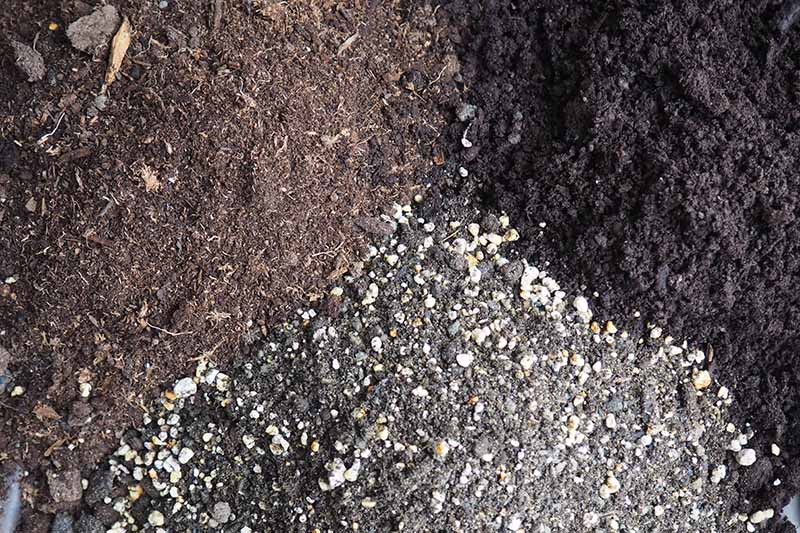
The garden soil and compost components provide nutrients and tilth while the succulent soil is highly porous with a coarse texture.
The result is a nutritious, non-compacting soil with excellent drainage that’s superbly suited for bulbs in planters and pots.
You’ll add soil in the next step – keep reading to find out how!
Planting
Muscari bulbs are planted in autumn, typically in October or November in the Northern Hemisphere, depending on your location and the climate there.
They can be planted on their own or mixed in with other bulbs and perennials.
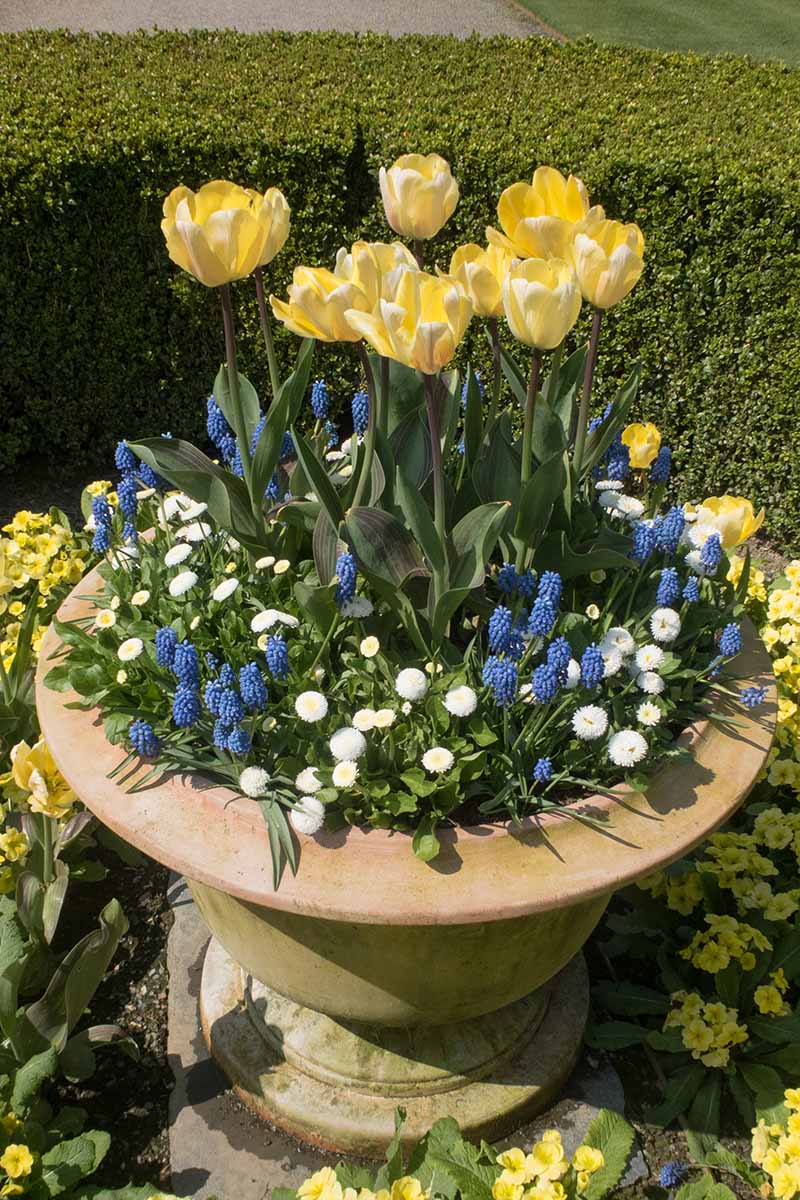
But keep in mind that by midsummer these bulbs will be dormant, with no trace of foliage left above ground. If planted on their own, you’ll have a pot of soil filled with hidden bulbs, and that’s it.
This is fine for small pots that can be tucked into out-of-the-way spots until growth resumes.
But for larger pots and planters, adding other types of bulbs and perennials gives a much better display for a longer part of the year.
A mixed planting can produce successive waves of color, fragrance, and flowers set amid an “evergreen” background that keeps containers interesting and looking great for the entire growing season.
Let’s look at the required steps for both types of plantings.
Muscari Bulbs Only
For plantings of Muscari bulbs only, add soil to pots until they’re about three-quarters full and mix in some bone meal for healthy roots.
As a rule of thumb, use one-to-two tablespoons of bone meal per one gallon of soil.
For example, a pot 12 inches high with a 12-inch diameter holds about five gallons of soil, so add in five to 10 tablespoons of bone meal.
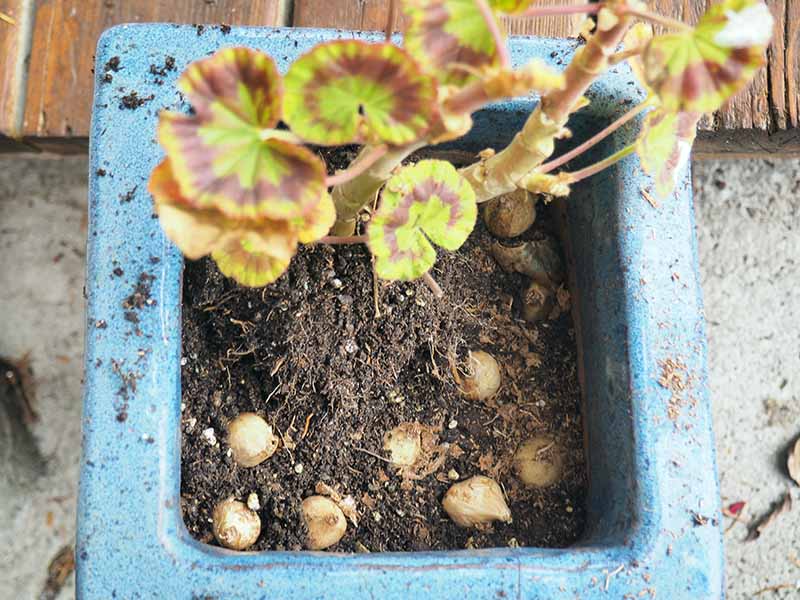
Gently nestle bulbs root end (flat end) down to a depth of twice their length, or two to three inches deep.
And for the greatest visual impact, space bulbs closer than you typically would in the garden, about one inch apart.
Cover the bulbs with two to three inches of soil and firm gently. Water lightly to settle in place.
Place containers in their winter location for eight to 10 weeks of chilling at temperatures of 35 to 48°F if they were not purchased pre-chilled.
If rainfall is inadequate or pots are under shelter, water lightly on a monthly basis to just barely moisten the soil. Withhold water if the soil freezes.
Add a two- to four-inch layer of winter mulch to protect bulbs against freeze/thaw cycles. Good winter mulch materials include chopped leaves, pebbles, pine boughs, and straw.
To safeguard from winter conditions in Zones 6 to 9, move the pots into sheltered spots such as under decks or against fences, foundations, and walls.
If desired, wrap pots in insulating blankets, bubble wrap, pine boughs, or straw to protect the roots.
Wrapping containers in insulating materials also helps to prevent cracking of delicate porous materials such as ceramics, plaster, and terra cotta in freezing conditions.
Remove catchment saucers and elevate pots on bricks or pot toes through the winter so they don’t sit in puddles of water.
In Zones 5 and colder, regions with the harshest winters, you’ll need to move containers into an unheated cellar, garage, or shed to protect against hard freezes that can damage roots and porous container materials.
In Zones 10 and warmer, you’ll need to chill dormant potted bulbs in the refrigerator.
In late winter, move pots back to their usual location outdoors and remove any protective mulches after new growth appears.
Mixed Plantings
For mixed plantings, add soil and bone meal as above, then set larger bulbs like daffodils, hyacinths of the non-grape variety, or tulips and other types of perennials in place.
Add a layer of soil to evenly cover roots and larger bulbs, then set the grape hyacinth bulbs in place, planting to the same depth and spacing as outlined above for planting Muscari bulbs only.
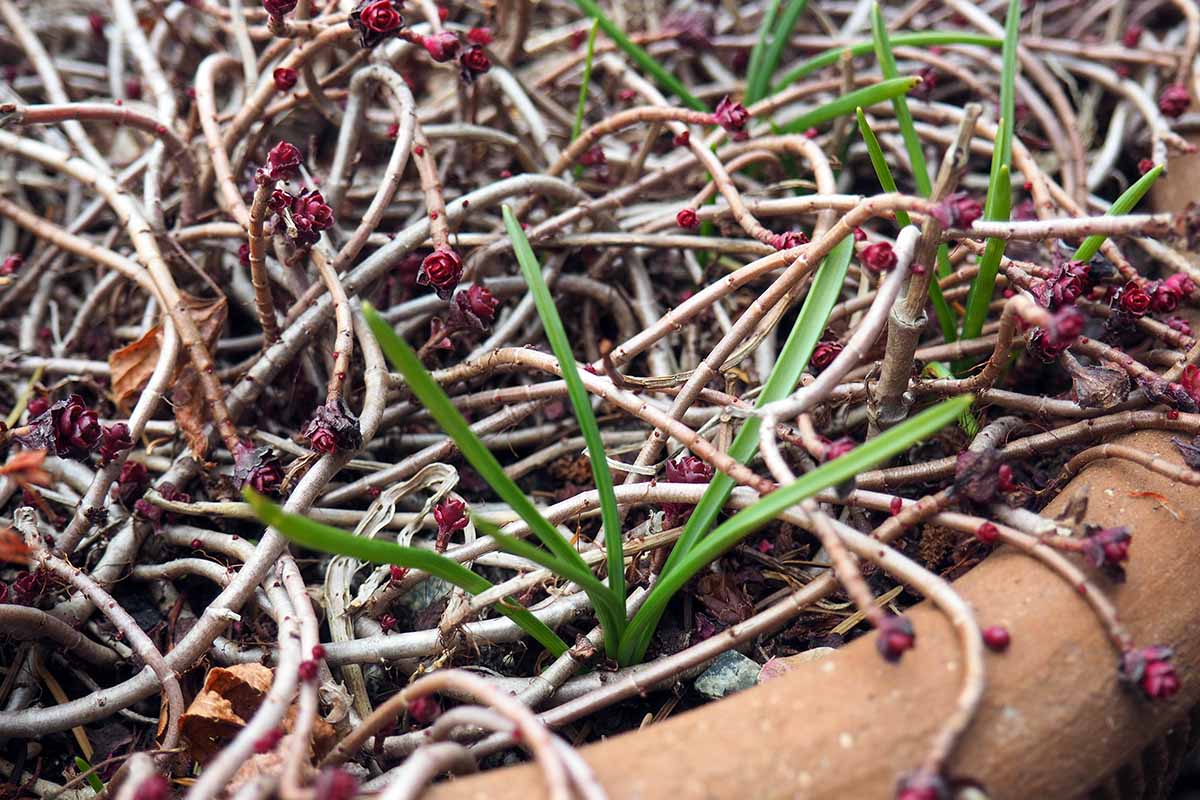
Certain species – like M. armeniacum and M. botryoids – might send up a few shoots of new foliage in autumn, but this is usually restricted to areas with mild winters.
New shoots survive nicely if provided with two to four inches of mulch to protect against freeze/thaw cycles.
Provide winter care and protection as outlined above.
Care and Maintenance
Grape hyacinths are very low maintenance.
In late winter or early spring, move containers into their growing location and remove winter mulches.
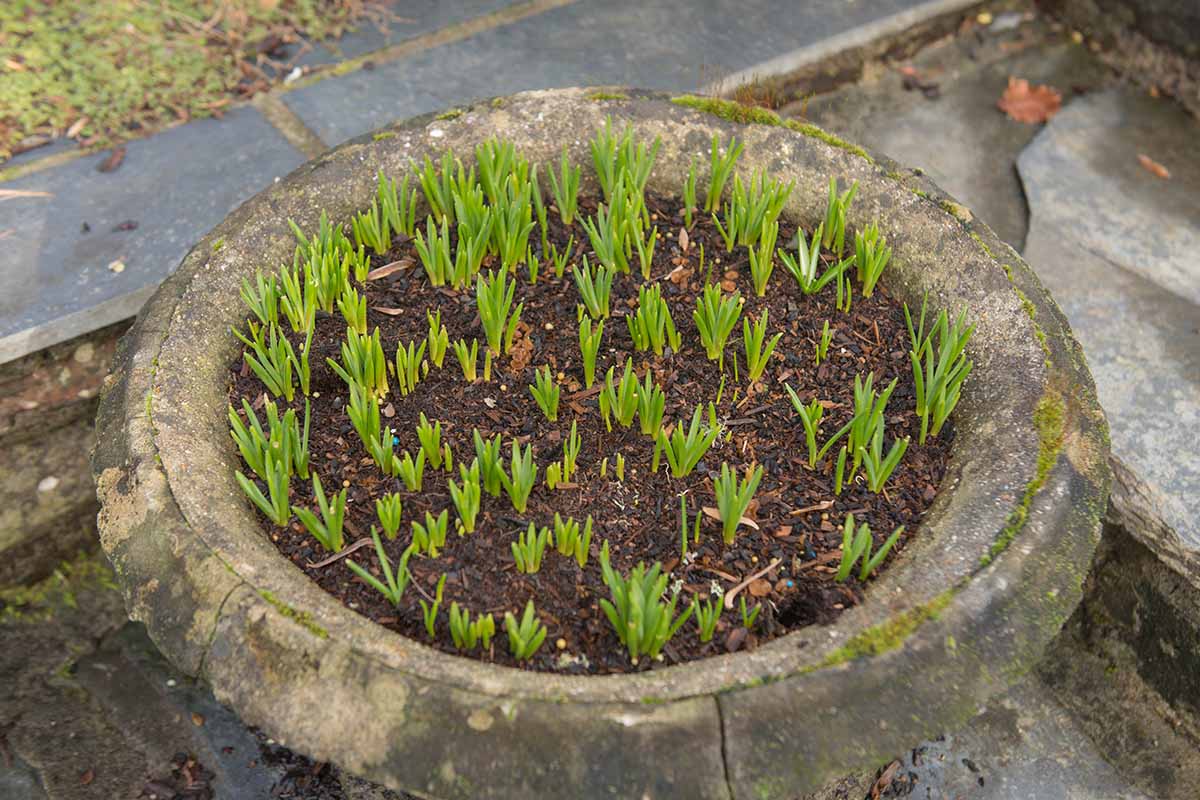
Sprinkle a slow-release granular bulb fertilizer over the soil surface – following the package directions for the amounts needed.
These are typically higher in phosphorus than nitrogen and potassium, so you might select a formula like 5-10-5 NPK, for example.
Water containers regularly, providing about one inch of water per week through late spring to early summer, or whenever the foliage starts to turn yellow and die back.
After blooming, leave the foliage in place to perform photosynthesis, creating food for next year’s plants and allowing the bulbs to multiply.
Once the foliage dies back, remove it with a small hand rake.
When bulbs are dormant, reduce watering in pots where grape hyacinths are growing on their own.
In mixed plantings, continue to water as needed for any included perennials that are not spring-blooming flowering bulbs.
Divide in fall every three to five years, when container plantings become overcrowded. Learn all about how to divide and propagate Muscari in our guide.
Potted Gems
Grape hyacinths are a beautiful choice for containers. Easily cultivated and low maintenance, you’ll love the gorgeous colors and light fragrance of these potted gems in the early garden.
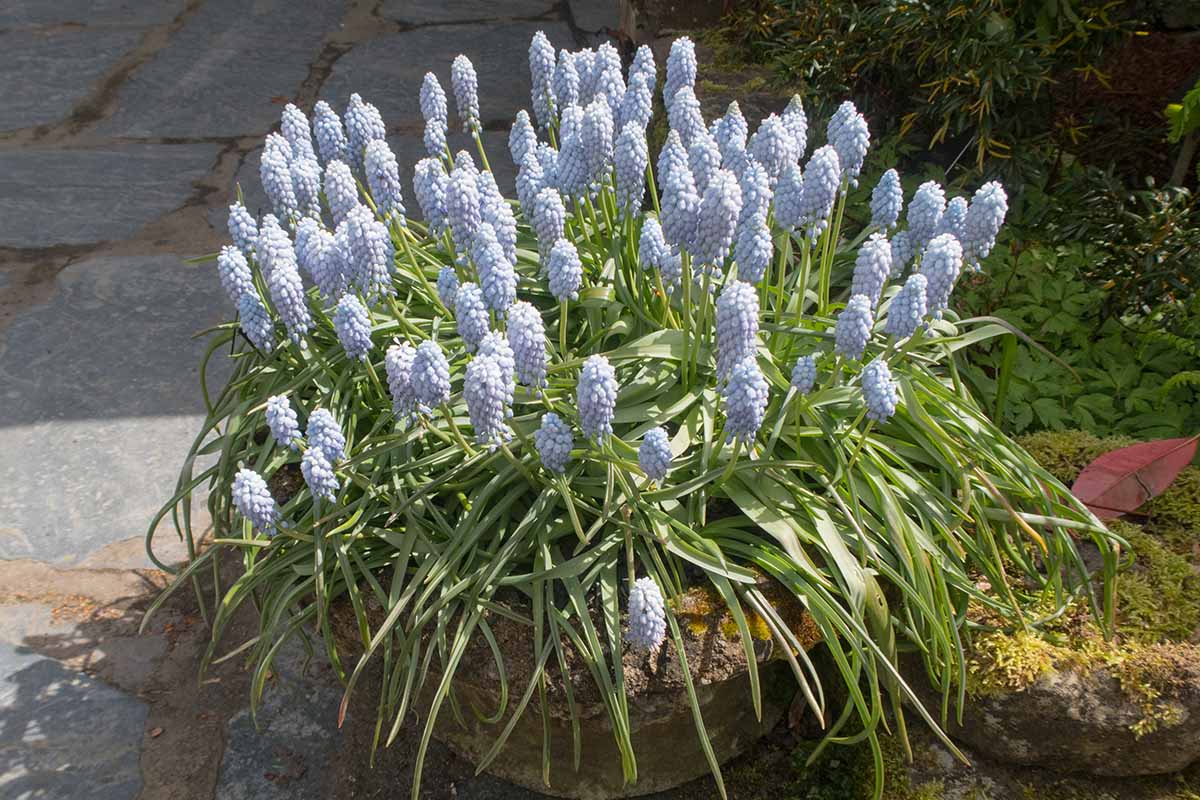
Pot up in the fall on their own or as part of a mixed planting, then provide winter protection as needed and chilling temperatures.
In early spring, move containers to decks, patios, and walkways to enjoy their aromatic and colorful display!
How will you feature container-grown Muscari bulbs this year? Tell us about it in the comments section below.
And for more spring-flowering bulb ideas, read up on these topics next:
